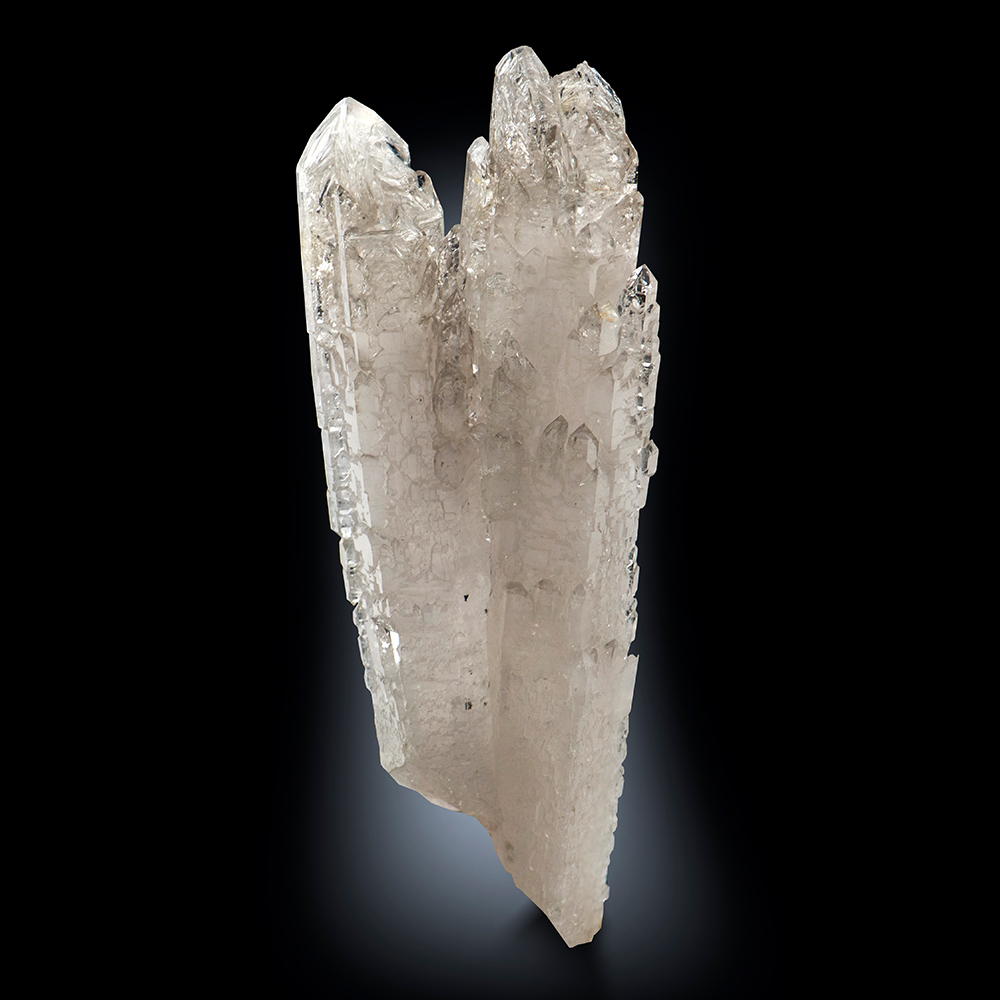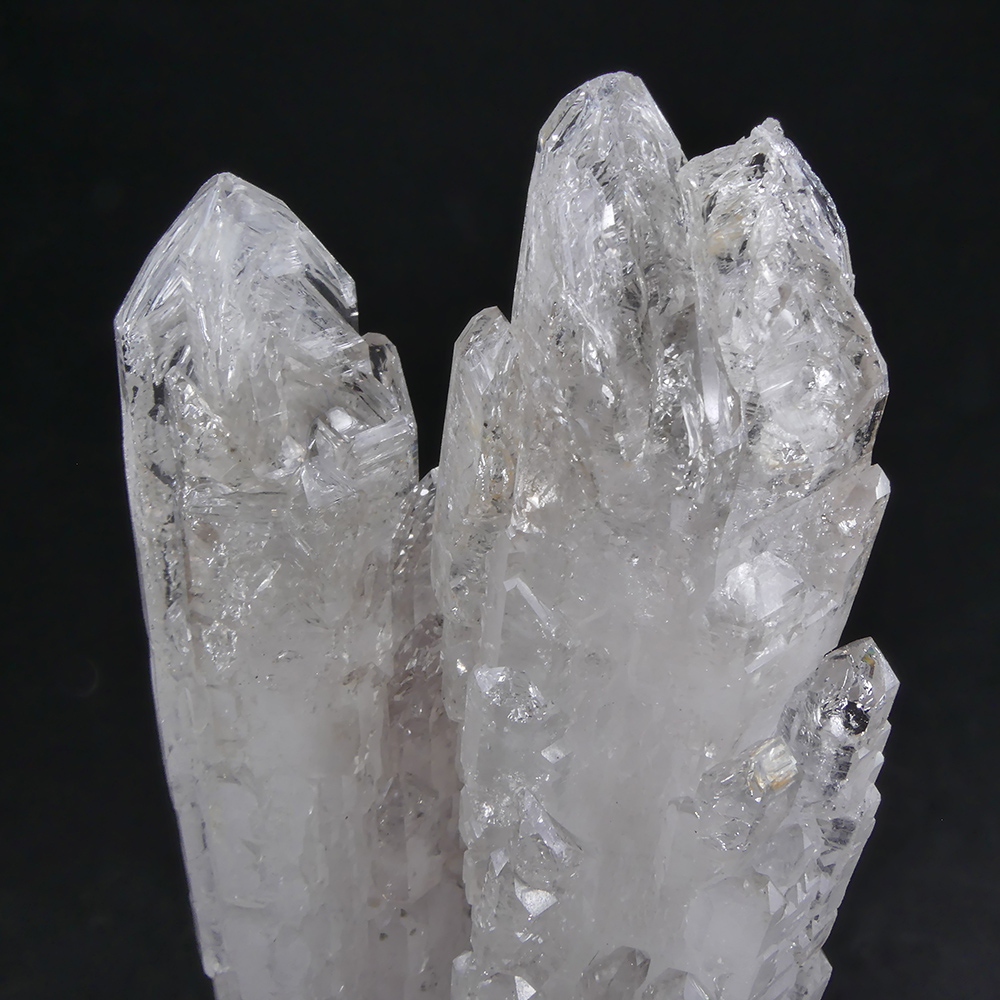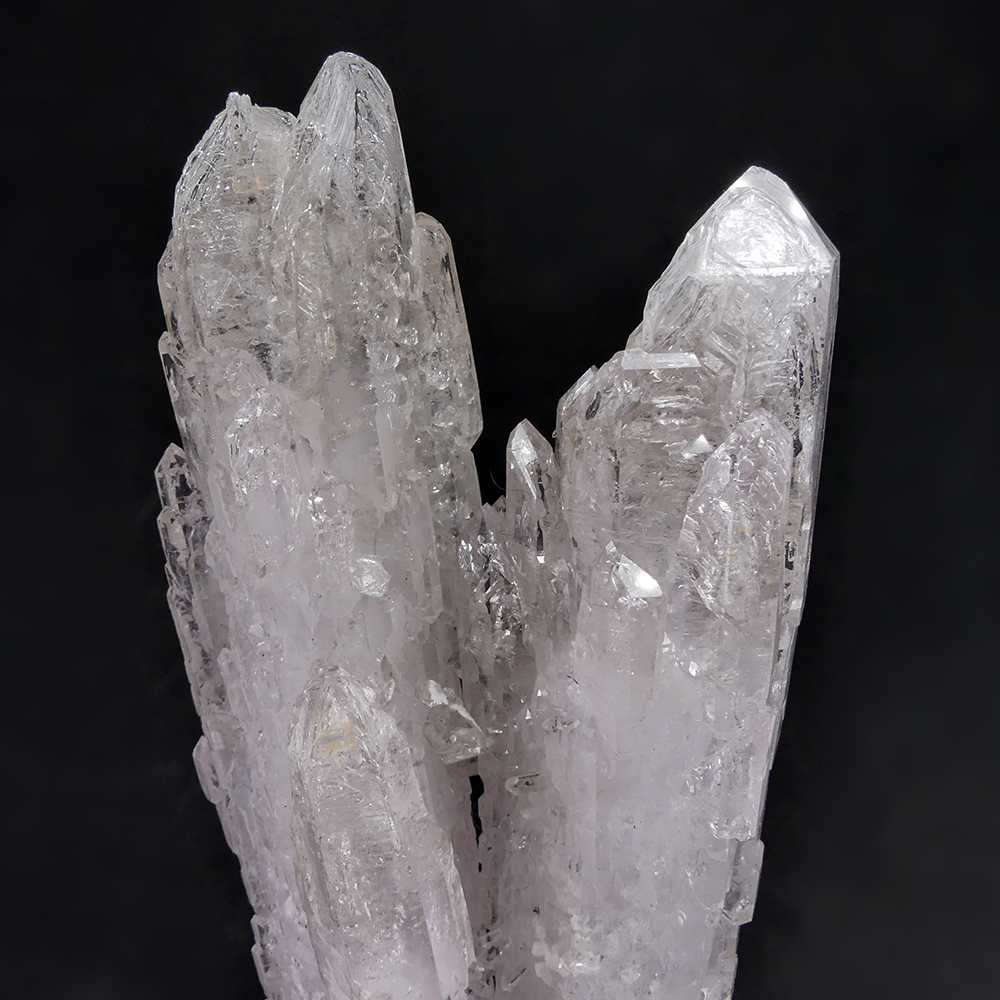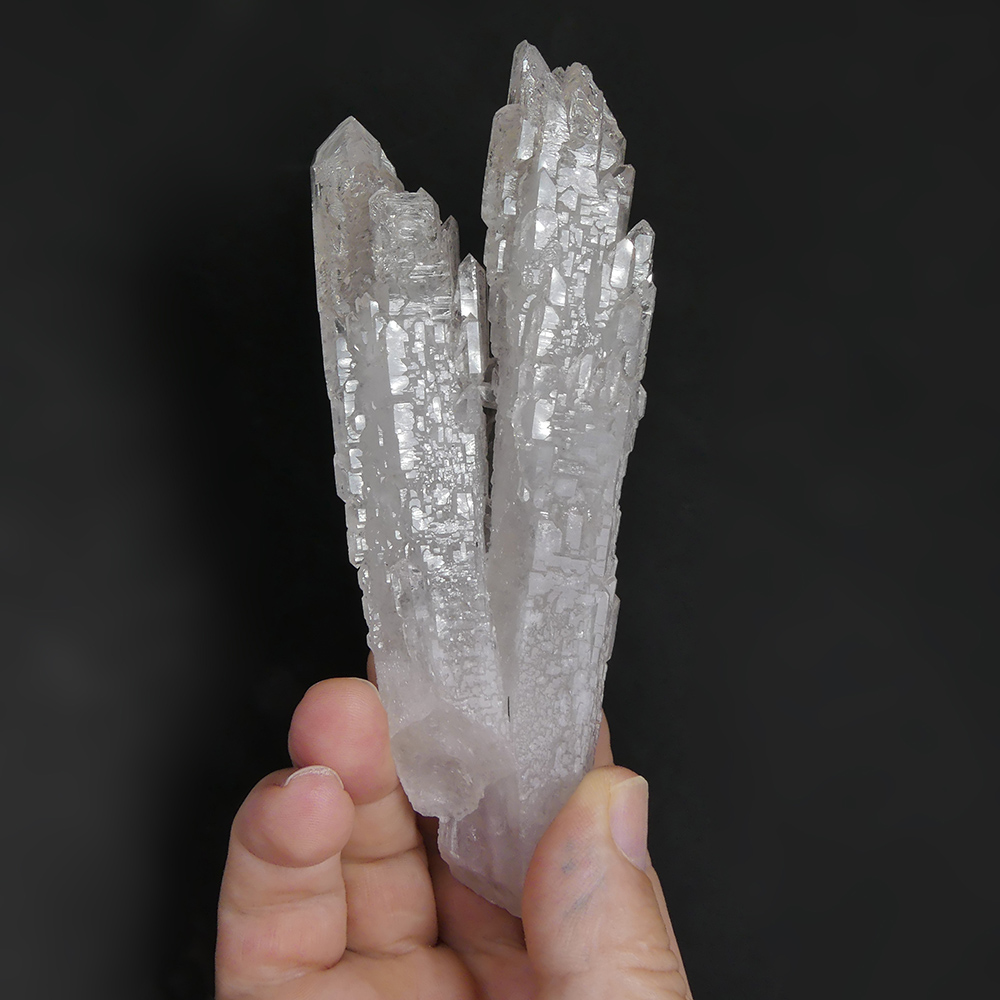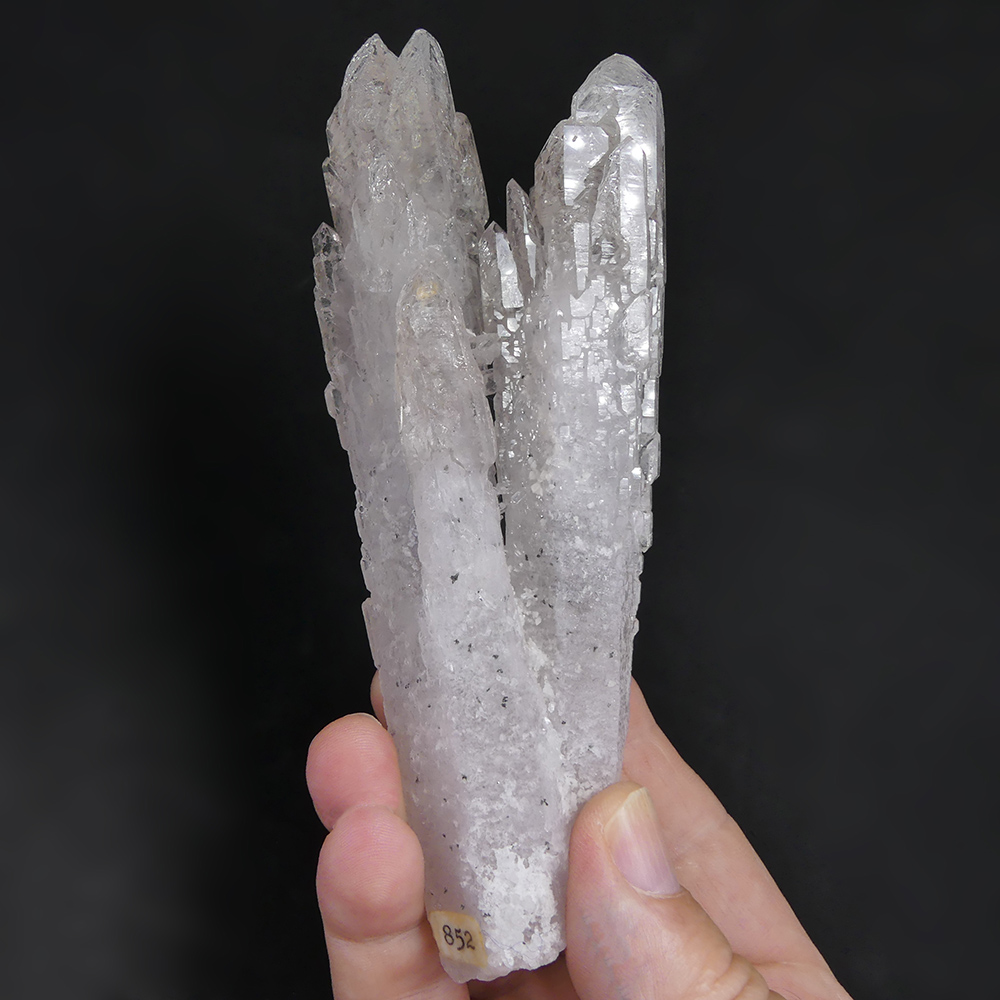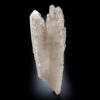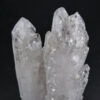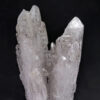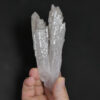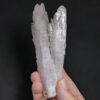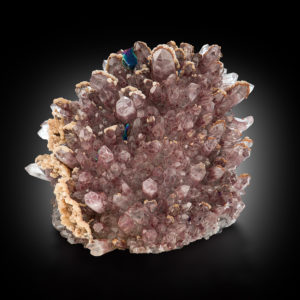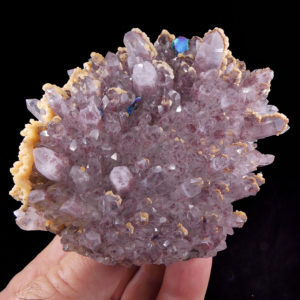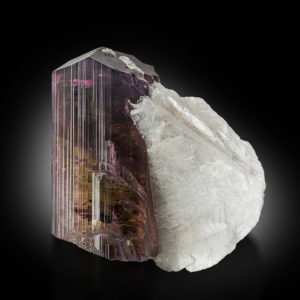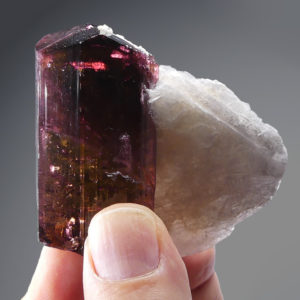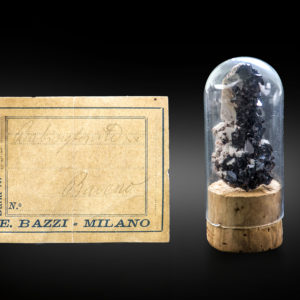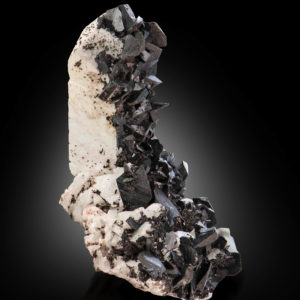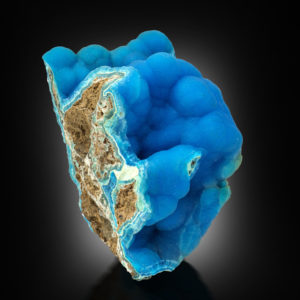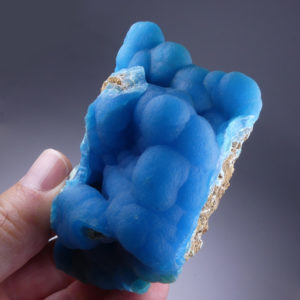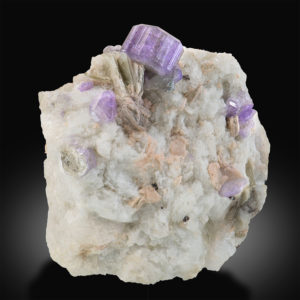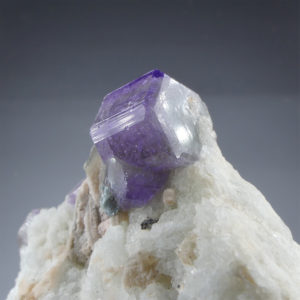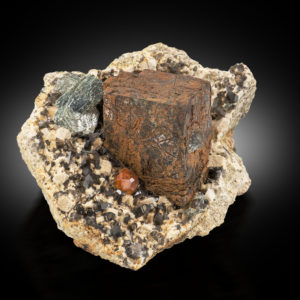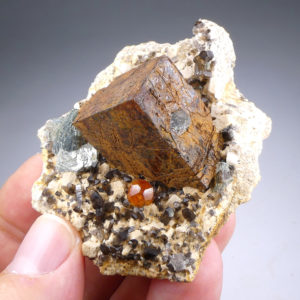QUARTZ – Slovakia – GFS0422
In stock
€ 450,00 +TAX
Quartz (amethystine)
Banská Štiavnica, Banská Štiavnica District, Banská Bystrica Region, Slovakia
15×5,7×3,5 cm.
This classic, well-known European locality hasn’t supplied collectors with specimens for a long time. We present to you this slender and elegant pair of quartz crystals, highly lustrous all around, featuring the typical skeletal formation. The complex crystallization resembles a Gothic castle, with many smaller quartz crystals growing along the sides. Internally opaque, the cluster exhibits increasing transparency towards the outer body and the crystal tips, with occasional and slight clay inclusions. The overall color of the cluster is white with a very faint amethyst hue. All in all, this old specimen can be considered both aesthetic and highly representative.
Skeletal quartz, also known as “fenster quartz,” “hollow quartz,” or “Elestial quartz,” forms under specific conditions that lead to its distinctive skeletal or hollow structure. This type of quartz is characterized by a series of stepped growth patterns and hollow spaces within the crystal, giving it a skeletal appearance. The formation of skeletal quartz is due to crystals that develop under conditions of rapid growth and high degrees of supersaturation so that atoms or ions are added more rapidly to edges and corners of growing crystals, resulting in branched dendrites or hollow stepped depressions, “hoppers”, and often encompassing bits of clay, water and other minerals within their structure. Skeletal quartz is often found in hydrothermal veins, pegmatites, or volcanic environments where silica-rich fluids circulate. The temperature, pressure, and chemical composition of these fluids play a crucial role in the development of skeletal features.
The Banská Štiavnica ore district is one of the most significant and historic mining regions in Europe. It has a rich history in the extraction of precious and base metals, particularly silver, gold, copper, and lead. Banská Štiavnica is situated within the Central Slovak Volcanic Field, which is part of the Inner Western Carpathians. The region is characterized by a complex volcanic and tectonic history, primarily related to the Neogene (Miocene) period of intense volcanic activity. The district is centered around the Banská Štiavnica stratovolcano, one of the largest volcanic structures in the Carpathians. The volcano and its associated caldera formed as a result of multiple phases of volcanic activity, including explosive eruptions, lava flows, and the emplacement of intrusive bodies. The ore deposits in the Banská Štiavnica district are primarily epithermal, formed from hydrothermal fluids circulating through the volcanic rocks. These fluids deposited a variety of minerals as they cooled and interacted with the surrounding rocks in a complex network of veins that run through the volcanic rocks. These veins are typically steeply dipping and vary in width. The most productive veins were often those associated with the late-stage hydrothermal processes that deposited silver and gold. Surrounding the ore veins, the host rocks often show extensive hydrothermal alteration. Common alteration minerals include quartz, clay minerals, sericite, and carbonates. The primary minerals found in the veins include metallic sulphides : Sphalerite, Galena, Chalcopyrite, Pyrite, Tetrahedrite, Acanthite. For more info ![]()
In stock
Additional information
| Weight | 0.234 kg |
|---|---|
| Dimensions | 15 × 5.7 × 3.5 cm |
| Country | |
| Location | Banská Štiavnica, Banská Štiavnica District, Banská Bystrica Region |
| Species |

